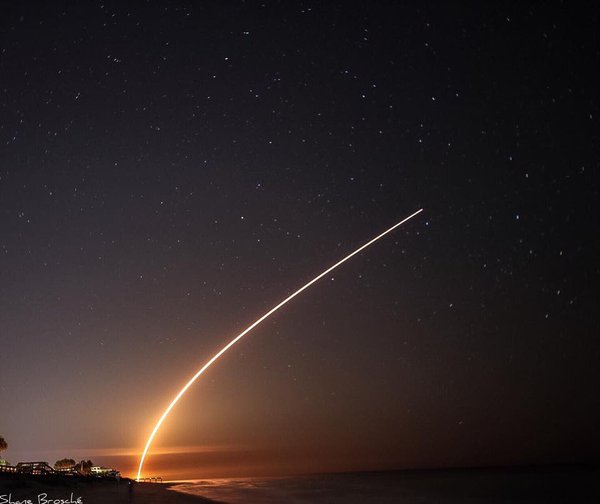-
Tips for becoming a good boxer - November 6, 2020
-
7 expert tips for making your hens night a memorable one - November 6, 2020
-
5 reasons to host your Christmas party on a cruise boat - November 6, 2020
-
What to do when you’re charged with a crime - November 6, 2020
-
Should you get one or multiple dogs? Here’s all you need to know - November 3, 2020
-
A Guide: How to Build Your Very Own Magic Mirror - February 14, 2019
-
Our Top Inspirational Baseball Stars - November 24, 2018
-
Five Tech Tools That Will Help You Turn Your Blog into a Business - November 24, 2018
-
How to Indulge on Vacation without Expanding Your Waist - November 9, 2018
-
5 Strategies for Businesses to Appeal to Today’s Increasingly Mobile-Crazed Customers - November 9, 2018
SpaceX Lands Rocket Second Time
Musk said that the Falcon 9 rocket’s first stage has touched down on a ship about 200 miles off the Florida coast.
Advertisement
This is the second landing on a row for SpaceX, on April 8 a rocket landed back after launching a supply stash for NASA to the International Space Station. It was the second successful ocean landing for Elon Musk’s space company, which intends to offer low-priced launch services by re-using its rockets.
Because of the satellite’s destination in the geostationary transfer orbit, the company, on Monday, said the rocket would be “subject to extreme velocities and re-entry heating, making a successful landing unlikely”.
The Falcon 9 lifted off from Space Launch Complex 40 at the Cape Canaveral Air Force Station at 1:21 a.m.
As a result, the rocket’s first stage dropped to the ocean platform “a lot faster and hotter than last time”, explained CEO Elon Musk.
The launch continues SpaceX’s comeback from a launch disaster last June in which a Falcon 9 blew up over the ocean.
To date, SpaceX is the only company to successfully return a rocket from orbit-first on solid ground, in December 2015, then in the ocean this spring.
Entrepreneur Elon Musk created SpaceX – or Space Exploration Technologies – as a launch service that would be able to offer much lower rates than competitors with the simple sounding yet hard to achieve strategy of reusing the rockets. The Falcon Heavy is basically three Falcon 9 vehicles strapped together; these components will need to be assembled in the 39A hangar.
Another communications satellite, this time for Thailand, was just delivered to the cape and is scheduled to launch on a Falcon 9 at the end of the month. The satellite is created to provide TV programming and broadband services in Japan, Asia, Oceania, Russia and the Pacific region for at least 15 years, replacing an older satellite called JCSAT-2A.
As the second stage moved into orbital position, the first stage fell back for the landing, firing its engine to re-enter the Earth’s atmosphere. Its four previous such attempts all ended in failure.
Advertisement
The Asian company delivered the craft to provide high-definition television and broadband internet for the next 15 years to Asia, Russia and Oceania.




























